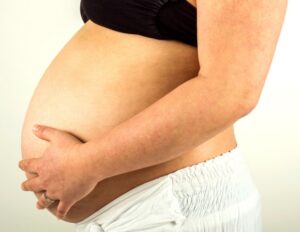Vitamin D during pregnancy boosts childhood bone health for years, study shows

A recent follow-up to the MAVIDOS trial confirms that vitamin D supplementation during pregnancy improves offspring bone mineral density, with benefits persisting up to seven years of age.
Study: Pregnancy vitamin D supplementation and offspring bone mineral density in childhood Follow-up of a randomised controlled trial. Image Credit: April stock / Shutterstock.com
Previously, the MAVIDOS trial reported that vitamin D supplementation during pregnancy significantly improved offspring’s bone mineral density (BMD) when measured at four years. In a recent study published in The American Journal of Clinical Nutrition, researchers examine the persistence of this improvement in BMD into later childhood years.
What is the MAVIDOS study?
The MAVIDOS study was a randomized controlled trial (RCT) that assessed the effect of vitamin D supplementation during pregnancy in the United Kingdom. All participants enrolled in the study were between 11 and 14 weeks of gestation and received 1,000 IU of vitamin D/day until delivery.
A total of 965 individuals were included in the study, with 723 children born at term. Of these term children, 477 underwent a dual-energy X-ray absorptiometry (DXA) scan from which BMD could be assessed at four years of age. By the second time point of six to seven years, 447 children underwent a second DXA scan.
Children who completed the second visit were more likely to be born to non-smoking older mothers with a higher educational level. These children also had a longer period of breast milk consumption, with a slight increase in the proportion of children taking vitamin D supplements since the initial assessment visit.
Improved bone outcomes
Whole-body-less-head (WBLH) DXA scans were used to measure BMD and bone mineral apparent density (BMAD). Both WBLH BMD and BMAD were higher in the vitamin D group than in the placebo group at six to seven years of age.
Even with adjustments for sex, height, weight, the duration of breast milk consumption, and vitamin D supplementation at six to seven years, children whose mothers took vitamin D supplements during pregnancy exhibited higher WBLH BMD and BMAD measurements.
For a subset of children who underwent the DXA scan at birth and both assessment points, similar increases were observed at both time points for WBLH bone outcomes. A trend towards increased lumbar spine BMAD at six to seven years was also observed.
The primary aim of the MAVIDOS study was to test for improved BMC at birth, which showed no difference with supplementation. However, infants born in winter months exhibited higher bone mineral content (BMC) than placebo.
How do these findings compare to other studies?
The study findings agree with those of the Copenhagen Prospective Studies on Asthma in Childhood (COPSAC2010) trial. However, a Bangladesh study failed to show such improvements. Although baseline health conditions, such as malnutrition and infections, may contribute to these contradictory findings, additional research is needed to clarify these differences.
An Australian observational study also demonstrated similar positive outcomes in the offspring at 20 years following maternal vitamin D supplementation at 18 weeks.
How does maternal vitamin D supplementation support bone density in children?
Vitamin D supplementation during pregnancy does not increase the availability of calcium to the growing fetus despite higher fetal vitamin D levels during the first few months of life, which may support calcium absorption. Higher anti-rachitic activity in breast milk may also contribute to higher bone mineralization in the child.
Epigenetic mechanisms may also be involved in the impact of vitamin D supplementation on bone outcomes later in childhood but not at birth. For example, vitamin D may stimulate the bone’s response to mechanical loading as the child begins to move on its own. Alternatively, higher vitamin D levels in early infancy promote spinal growth at the time when it is occurring rapidly, thus improving its mineralization in early rather than later childhood.
Conclusions
The study findings reaffirm that the positive effects associated with vitamin D supplementation in pregnancy persist beyond four years of age into later childhood years. Nevertheless, validation and extension of these findings is warranted to guide recommendations on pregnancy supplementation with vitamin D at 1,000 IU/day.
The observed increase in BMD during childhood is expected to reduce fracture risk, as confirmed by one retrospective analysis of the Danish trial. Future studies are needed to determine whether this increase in BMC and BMD persists as children transition into adulthood. These effects would be clinically significant in reducing the fracture risk due to fragile bones.
Journal reference:
- Moon, R. J., D’Angelo, S., Curtis, E. M., et al. (2024). Pregnancy vitamin D supplementation and offspring bone mineral density in childhood Follow-up of a randomised controlled trial. The American Journal of Clinical Nutrition. doi:10.1016/j.ajcnut.2024.09.014.








